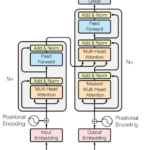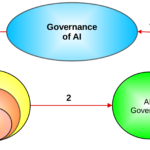This is another paper which OGC has commissioned. The first draft has been shared and did generate negative reaction (unwarranted in my opinion) from some DGP quarters. The first draft of the paper is here: DG-SHD-Final-Report-IDCR-14-May-2012 )
Here are my initial set of comments.
1. I have issues with the way the paper sees democracy, DG and GG. First we should make sure we do not mix democracy and democratic governance.
Seems to me the paper is doing this in some sections. These are two different beasts. Second, I think the way DG is depicted (inclusive
participation + responsive state capacity) is accurate. If anything, GG will claim they are essentially focused on state capacity (ask the WB).
But they do not care about participation or international principles. So the difference thus centers on this two dimensions. (on page 11/12
we also see the political dimension of DG which include legitimacy, accountability, competence and human rights/rule of law. I am not sure
where this is coming from though).
2. The overview and selection of governance indicators for the analysis is sound and consistent. However, I am not 100% sure Polity IV is the best
to do the analysis. If it were up to me I would also have selected other indicators (say Kaufmann, the Economist) to present some comparative results and draw additional discussions. Ideally, we should be able to obtain similar results for all datasets (hopefully).
3. On the positive side, Polity is a set of QUALITATIVE indicators. This can serve as ammunition to fend off some of the comments from Asia and their insistence that one cannot use statistical analysis to do qualitative analysis. Same goes for the CIRI. This is a myth. However, on the negative side the selection of Polity data seems to be determining the way hypothesis are developed and the way we can measure them.
4. As I see it, the weakest part of the paper is the hypothesis it tries to test. For starters, it is not clear to me where are these hypothesis coming from other than the apparent selection of the datasets selected for the analysis. To me, the hypothesis sound more like something Freedom House will do but not something we at UNDP will endorse (pace the section on Theoretical connections)
5. While I fully support and welcome the introduction of public goods into the discussion, I am not entirely convinced about the rational presented for some of the hypothesis. For example, in so-called “democracies” how to we then factor in the issue of the powerful private sector lobbying against any SD policies? I have seen this in both developed and developing countries. In hypothesis one we read that leaders will tend to stop the provision of public goods as they can
benefit “rebels”. One can add that leader will also stop this if such provision go against the interests of powerful private sector players.
6. On hypothesis two I think we should say something about “free” resources. I do not think they are free. After all it is multinationals from the developed who get the big contracts to exploit such “free” resources and negotiate with local leaders to split the pay. I think that is is a governance issue, the fact that somehow
multinational and national leaders close this deal in secret ways and do not involve anyone in the process. What leaders get is a “rent” from these companies that allow them to then invest in any way or fashion they want. In this regard, it will be interesting to compare how Statoil works in comparison so say Aramco, Pemex or PDVesa…
7. Hypothesis 4 focuses only on the political dimensions of human rights (again more a la Freedom House) but seems to forget about the economic, social and cultural aspects of them. I thin one can argue that economic and social right also play a role in SHD as we can see in most developed countries where poverty is not an issue (although nowadays inequality is becoming a large issue).
8. I find the statistical analysis sound and accurate. Using qualitative data puts some restrictions on the various stat options one can use. I personally find the multivariate analysis more interesting and significant. There are some issues with the handling of missing values. And let us not forget that strong correlation between DG and SHD does not prove causality.
9. Finally, in terms of the Bangkok comments you kindly share, I think they miss the point. While I can agree with some of the issue raised, I also think we need to be a bit more rigorous in our analysis and use all the tools we have at our disposal. And this paper is doing exactly that. This does not mean that we are going to drop everything out. But we can certainly use this type of analysis that now we have additional evidence to support our case on DG and its role on SHD.
Hope this helps.
Cheers, Raúl





